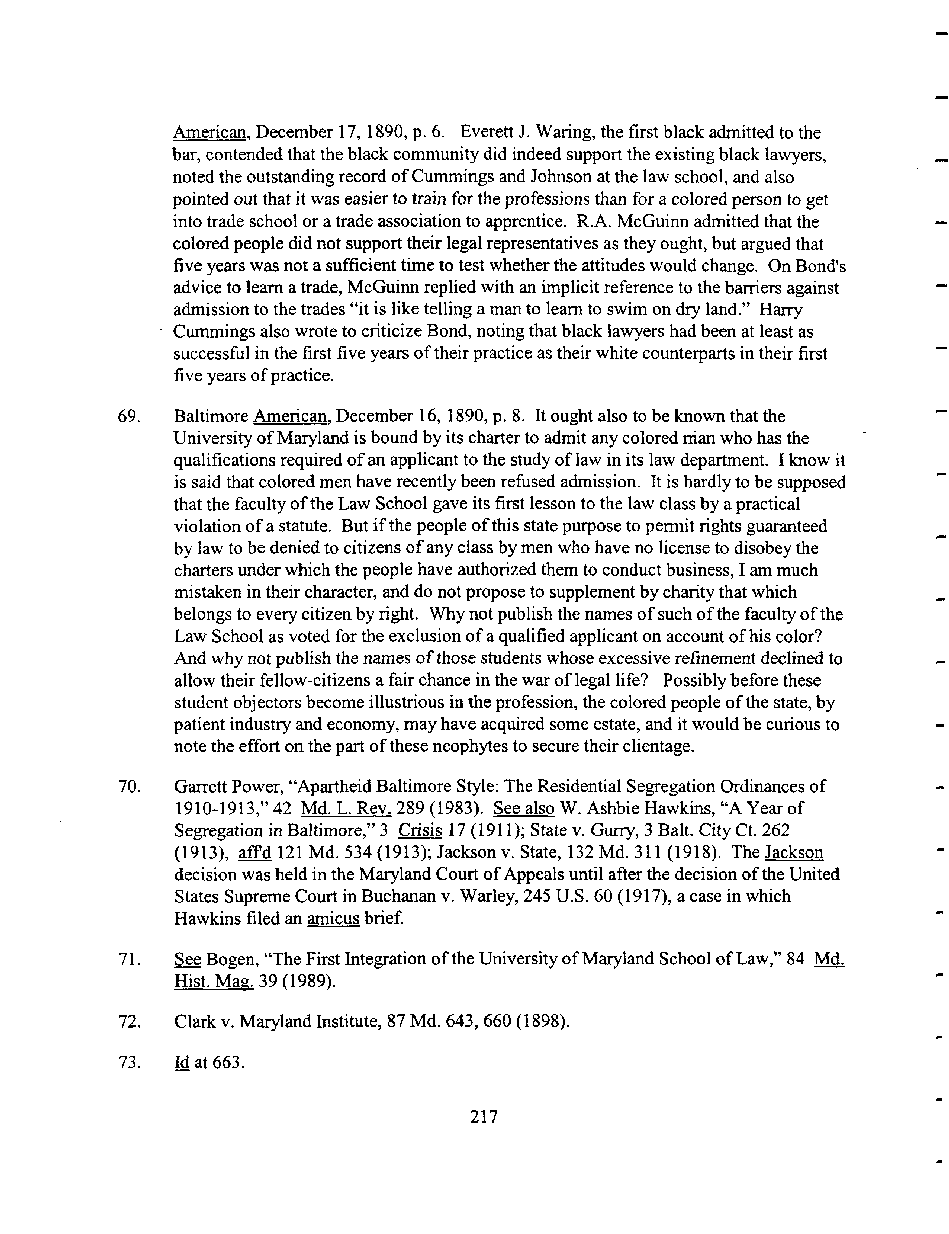|
American. December 17, 1890, p. 6. Everett J. Waring, the first black admitted to the
bar, contended that the black community did indeed support the existing black lawyers,
noted the outstanding record of Cummings and Johnson at the law school, and also
pointed out that it was easier to train for the professions than for a colored person to get
into trade school or a trade association to apprentice. R.A. McGuinn admitted that the
colored people did not support their legal representatives as they ought, but argued that
five years was not a sufficient time to test whether the attitudes would change. On Bond's
advice to learn a trade, McGuinn replied with an implicit reference to the barriers against
admission to the trades "it is like telling a man to leam to swim on dry land." Harry
Cummings also wrote to criticize Bond, noting that black lawyers had been at least as
successful in the first five years of their practice as their white counterparts in their first
five years of practice.
69. Baltimore American. December 16, 1890, p. 8. It ought also to be known that the
University of Maryland is bound by its charter to admit any colored nian who has the
qualifications required of an applicant to the study of law in its law department. I know it
is said that colored men have recently been refused admission. It is hardly to be supposed
that the faculty of the Law School gave its first lesson to the law class by a practical
violation of a statute. But if the people of this state purpose to permit rights guaranteed
by law to be denied to citizens of any class by men who have no license to disobey the
charters under which the people have authorized them to conduct business, I am much
mistaken in their character, and do not propose to supplement by charity that which
belongs to every citizen by right. Why not publish the names of such of the faculty of the
Law School as voted for the exclusion of a qualified applicant on account of his color?
And why not publish the names of those students whose excessive refinement declined to
allow their fellow-citizens a fair chance in the war of legal life? Possibly before these
student objectors become illustrious in the profession, the colored people of the state, by
patient industry and economy, may have acquired some estate, and it would be curious to
note the effort on the part of these neophytes to secure their clientage.
70. Garrett Power, "Apartheid Baltimore Style: The Residential Segregation Ordinances of
1910-1913," 42 Md. L. Rev. 289 (1983). Seealso W. Ashbie Hawkins, "A Year of
Segregation in Baltimore," 3 Crisis 17 (1911); State v. Gurry, 3 Bait. City Ct. 262
(1913), affdl21Md. 534 (1913); Jackson v. State, 132 Md. 311 (1918). The Jackson
decision was held in the Maryland Court of Appeals until after the decision of the United
States Supreme Court in Buchanan v. Warley, 245 U.S. 60 (1917), a case in which
Hawkins filed an amicus brief.
71. See Bogen, "The First Integration of the University of Maryland School of Law," 84 Md.
Hist. Mag. 39 (1989).
72. Clark v. Maryland Institute, 87 Md. 643, 660 (1898).
73. Id at 663.
217
�
|

